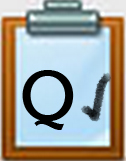Q1 Applications Introduction
Introduction
In this Quest, you will explore and analyze different software applications that are used to communicate ideas creatively.
I Can Statements
- know there are different media tools for communicating an idea
- understand the advantages and disadvantages of using different media tools
Direct link to Analyzing Applications video (1:08), an animated video of Students thinking about different applications that you might use for an assignment.
Competencies & Standards
MITECS Michigan Integrated Technology Competencies for Students, and
1. Empowered Learner
d. Understand the fundamental concepts of technology operations, demonstrate the ability to choose, use and troubleshoot current technologies, are able to transfer their knowledge to explore emerging technologies
5. Computational Thinker
c. Break problems into component parts, extract key information, and develop descriptive models to understand complex systems or facilitate problem-solving
6. Creative Communicator
a. Students choose the appropriate platforms and tools for meeting the desired objectives of their creation or communication.
Websites and Documents
Websites
21t4s Videos
21t4s Documents & Quizzes




